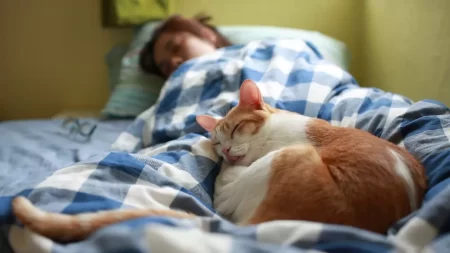If you see a cat roaming around your neighborhood, you may wonder if it belongs to someone or if it is a stray. You may also wonder what you can do to help the cat or if you should call animal control. In this article, we will explain what animal control does with stray cats and what are some alternatives to calling them.
The Role of Animal Control
Animal control is a government agency that is responsible for managing and protecting animals in a community. Depending on the location, animal control may have different duties and policies regarding stray cats. Some of the common roles of animal control are:
- Picking up stray cats: Animal control may pick up stray cats that are found on public property or that are reported by residents. They may also set up traps to catch cats that are hard to approach. However, not all animal control agencies have the resources or the mandate to pick up every stray cat they encounter. Some may only pick up cats that are sick, injured, or causing a nuisance.
- Responding to complaints: Animal control may respond to complaints from residents about stray cats that are damaging property, spreading diseases, or posing a threat to public health and safety. They may also mediate conflicts between cat owners and neighbors or between cat caregivers and property owners.
- Enforcing laws and regulations: Animal control may enforce laws and regulations that apply to cats, such as licensing, vaccination, microchipping, spaying/neutering, and leash laws. They may also issue citations or fines to cat owners or caregivers who violate these laws or regulations.
- Euthanasia policies: Animal control may euthanize stray cats that are not claimed by their owners or adopted by new owners within a certain period of time. The length of this period may vary depending on the location and the capacity of the shelter. Some animal control agencies may have a no-kill policy or work with rescue groups to find homes for stray cats.
Handling Stray Cats
Before calling animal control to pick up a stray cat, it is important to understand the difference between community, stray, and feral cats. Community cats are domestic cats that live outdoors and have no clear owner. They may be friendly or wary of people, depending on their level of socialization. Stray cats are domestic cats that have been lost or abandoned by their owners and may still be able to adapt to living indoors. Feral cats are domestic cats that have been born and raised in the wild and are usually too fearful of people to be tamed.
One of the most effective and humane ways to handle stray cats is to implement a TNR (Trap-Neuter-Return) program. TNR involves trapping, spaying/neutering, vaccinating, and ear-tipping (a sign that the cat has been fixed) stray cats and returning them to their original location. TNR helps reduce the population and the problems of stray cats by preventing unwanted births, diseases, and behaviors. TNR also improves the health and well-being of the cats by allowing them to live in their natural environment.
Some of the common concerns that people have about outdoor cats are:
- They may harm wildlife, especially birds: While cats do prey on wildlife, their impact is often exaggerated or misunderstood. According to the American Bird Conservancy, the main threats to birds are habitat loss, climate change, pesticides, and collisions with buildings and vehicles. Moreover, studies have shown that TNR can reduce the predation of cats on wildlife by stabilizing the cat population and reducing their need to hunt for food.
- They may spread diseases to people or other animals: While cats can carry diseases, the risk of transmission to people or other animals is very low. According to the Centers for Disease Control and Prevention, most of the diseases that cats can transmit to people are rare or preventable by proper hygiene and vaccination. Moreover, TNR can reduce the risk of diseases by vaccinating and sterilizing the cats and improving their immune system.
- They may suffer from hunger, cold, or injury: While outdoor cats may face some challenges, they are also resilient and adaptable to their environment. According to Alley Cat Allies, a national advocacy organization for cats, most outdoor cats are healthy and have a similar lifespan to indoor cats. Moreover, TNR can improve the quality of life of outdoor cats by providing them with food, water, shelter, and medical care.
Alternatives to Animal Control
If you want to help stray cats without calling animal control, here are some alternatives that you can consider:
- Donations and funding for spay/neuter programs: You can donate money or supplies to local organizations that provide low-cost or free spay/neuter services for stray cats. You can also advocate for more funding and support from the government and the public for these programs.
- Encouraging responsible pet ownership: You can educate and encourage cat owners to spay/neuter, microchip, vaccinate, and identify their cats. You can also help them find solutions to keep their cats indoors or prevent them from roaming outside.
- Keeping cats indoors: You can keep your own cats indoors or provide them with a safe and stimulating outdoor enclosure. You can also help other cat owners to do the same by offering advice, resources, or assistance.
- Helping lost or injured cats: You can help reunite lost cats with their owners by checking for identification, scanning for microchips, posting flyers, or using online platforms. You can also help injured cats by taking them to a veterinarian, a rescue group, or a shelter.







